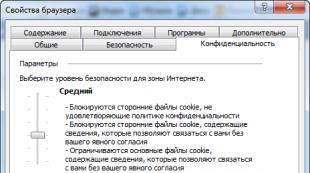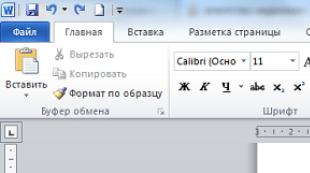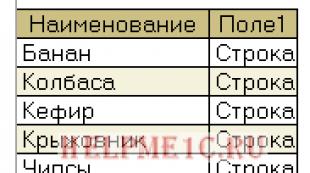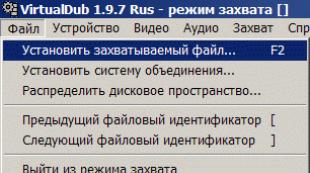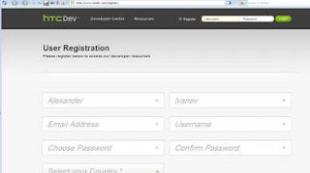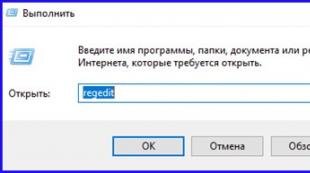Сертификат лаборатории касперского для firefox. Проверка защищенных соединений в mozilla firefox – Инструкция по эксплуатации KASPERSKY LAB KAV2011- Касперский антивирус
On websites which are supposed to be secure (the URL begins with "https ://"), Firefox must verify that the certificate presented by the website is valid. If the certificate cannot be validated, Firefox will stop the connection to the website and show a "Warning: Potential Security Risk Ahead" error page instead.
This article explains why you might see SEC_ERROR_UNKNOWN_ISSUER, MOZILLA_PKIX_ERROR_MITM_DETECTED or ERROR_SELF_SIGNED_CERT error codes on an error page and how to troubleshoot it.
- For other error codes on the "Warning: Potential Security Risk Ahead" error page, see the What do the security warning codes mean? article.
Table of Contents
What does this error code mean?
During a secure connection, a website must provide a certificate issued by a trusted certificate authority to ensure that the user is connected to the intended target and the connection is encrypted. If you click the Advanced button on a "Warning: Potential Security Risk Ahead" error page and you see the error code SEC_ERROR_UNKNOWN_ISSUER or MOZILLA_PKIX_ERROR_MITM_DETECTED, it means that the provided certificate was issued by a certificate authority that is not known by Firefox and therefore cannot be trusted by default.
The error occurs on multiple secure sites
In case you get this problem on multiple unrelated HTTPS-sites, it indicates that something on your system or network is intercepting your connection and injecting certificates in a way that is not trusted by Firefox. The most common causes are security software scanning encrypted connections or malware listening in, replacing legitimate website certificates with their own. In particular, the error code MOZILLA_PKIX_ERROR_MITM_DETECTED indicates that Firefox is able to detect that the connection is intercepted.
Antivirus products
Third-party antivirus software can interfere with Firefox"s secure connections. You could try reinstalling it, which might trigger the software into placing its certificates into the Firefox trust store again.
We recommend uninstalling your third-party software and using the security software offered for Windows by Microsoft:
- Windows 8 and Windows 10 - Windows Defender (built-in)
If you do not want to uninstall your third-party software, you could try reinstalling it, which might trigger the software into placing its certificates into the Firefox trust store again.
Here are some alternative solutions you can try:
Avast/AVG
In Avast or AVG security products you can disable the interception of secure connections:
- Open the dashboard of your Avast or AVG application.
- Go to Menu and click on Settings > Protection > Core Shields .
- Scroll down to the Configure shield settings section and click on Web Shield .
- Uncheck the box next to Enable HTTPS Scanning
and confirm this by clicking OK
.
In older versions of the product you"ll find the corresponding option when you go to Menu > Settings > Components and click Customize next to Web Shield
Bitdefender
In Bitdefender security products you can disable the interception of secure connections:
- Open the dashboard of your Bitdefender application.
- Go to Protection and in the Online Threat Prevention section click on Settings .
- Toggle off the Encrypted Web Scan
setting.
In older versions of the product you can find the corresponding option labelled Scan SSL when you go to Modules > Web Protection
In Bitdefender Antivirus Free it"s not possible to control this setting. You can try to repair or remove the program instead when you"re having problems accessing secure websites.
For corporate Bitdefender products, please refer to this Bitdefender Support Center page .
Bullguard
In Bullguard security products you can disable the interception of secure connections on particular major websites like Google, Yahoo and Facebook:
- Open the dashboard of your Bullguard application.
- Click on Settings and enable the Advanced view on the top right of the panel.
- Go to Antivirus > Safe browsing .
- Uncheck the Show safe results option for those websites which are showing an error message.
ESET
In ESET security products you can try to disable and re-enable SSL/TLS protocol filtering or generally disable the interception of secure connections as described in ESET’s support article .
Kaspersky
Affected users of Kaspersky should upgrade to the most recent version of their security product, as Kaspersky 2019 and above contain mitigations for this problem. The Kaspersky Downloads page includes "update" links that will install the latest version free of charge for users with a current subscription.
Otherwise, you can also disable the interception of secure connections:
- Open the dashboard of your Kaspersky application.
- Click on Settings on the bottom-left.
- Click Additional and then Network .
- In the Encrypted connections scanning section check the Do not scan encrypted connections option and confirm this change.
- Finally, reboot your system for the changes to take effect.
Family Safety settings in Windows accounts
In Microsoft Windows accounts protected by Family Safety settings, secure connections on popular websites like Google, Facebook and YouTube might be intercepted and their certificates replaced by a certificate issued by Microsoft in order to filter and record search activity.
Monitoring/filtering in corporate networks
Some traffic monitoring/filtering products used in corporate environments might intercept encrypted connections by replacing a website"s certificate with their own, at the same time possibly triggering errors on secure HTTPS-sites.
If you suspect this might be the case, please contact your IT department to ensure the correct configuration of Firefox to enable it working properly in such an environment, as the necessary certificate might have to be placed in the Firefox trust store first. More information for IT departments on how to go about this can be found in the Mozilla Wiki page CA:AddRootToFirefox .
Malware
Some forms of malware intercepting encrypted web traffic can cause this error message - refer to the article Troubleshoot Firefox issues caused by malware on how to deal with malware problems.
The error occurs on one particular site only
In case you get this problem on one particular site only, this type of error generally indicates that the web server is not configured properly. However, if you see this error on a legitimate major website like Google or Facebook or sites where financial transactions take place, you should continue with the .
Certificate issued by a authority belonging to Symantec
After a number of irregularities with certificates issued by Symantec root authorities came to light, browser vendors including Mozilla are gradually removing trust from these certificates in their products. Firefox will no longer trust server certificates issued by Symantec, including those issued under the GeoTrust, RapidSSL, Thawte and Verisign brands. For more information, see this Mozilla blog post and this compatibility document .
MOZILLA_PKIX_ERROR_ADDITIONAL_POLICY_CONSTRAINT_FAILED will be the primary error but with some servers, you may see the error code SEC_ERROR_UNKNOWN_ISSUER instead. In any case, if you come across such a site you should contact the owner of the website to inform them of the problem.
Mozilla strongly encourages operators of affected sites to take immediate action to replace these certificates. DigiCert is providing
Проверка защищенных соединений в Mozilla Firefox
Браузер Mozilla Firefox не использует хранилище сертификатов Microsoft Windows. Для проверки SSL-соединений при использовании Firefox необходимо установить сертификат "Лаборатории Касперского" вручную.
Чтобы установить сертификат "Лаборатории Касперского", выполните следующие действия:
- В блоке Сертификаты выберите закладку Безопасность и нажмите на кнопку Просмотр сертификатов .
- Центры сертификации и нажмите на кнопку Восстановить .
- .
Чтобы установить сертификат "Лаборатории Касперского" для Mozilla Firefox версии 3.х, выполните следующие действия:
- В меню браузера выберите пункт Инструменты ® Настройки .
- В открывшемся окне выберите раздел Дополнительно .
- На закладке Шифрование нажмите на кнопку Просмотр сертификатов .
- В открывшемся окне выберите закладку Центры сертификации и нажмите на кнопку Импортировать .
- В открывшемся окне выберите файл сертификата "Лаборатории Касперского". Путь к файлу сертификата "Лаборатории Касперского": %AllUsersProfile%\Application Data\Kaspersky Lab\AVP60MP4\Data\Cert\(fake)Kaspersky Anti-Virus personal root certificate.cer .
- В открывшемся окне установите флажки для выбора действий, для проверки которых будет применяться установленный сертификат. Для просмотра информации о сертификате воспользуйтесь кнопкой Просмотреть .
Если ваш компьютер работает под управлением операционной системы Microsoft Windows Vista, то путь к файлу сертификата "Лаборатории Касперского" будет таким: %AllUsersProfile%\Kaspersky Lab\AVP60MP4\Data\Cert\(fake)Kaspersky Anti-Virus personal root certificate.cer .
Когда я установил на свежеприобретенный ноутбук с операционной системой Windows 8.1 x64 антивирус Касперского, а точнее Kaspersky Internet Security для всех устройств (Версия 2016 (16.0.0.614)), то при первой же попытке зайти на сайт Яндекса (справедливо и для Google) получил следующее предупреждение в окне браузера FireFox x64 v43.0.0:
При этом большинство других сайтов работающих по HTTPS протоколу, в том числе и мой блог, открывались вполне нормально. То есть сбоев в работе браузера не наблюдалось.
Как Касперский проверяет защищенные SSL соединения
Антивирус Касперского проверяет защищенные SSL соединения с помощью установки сертификата Лаборатории Касперского (самоподписанного сертификата). И отсутствие такого сертификата в хранилище браузера приводит к описанной ошибке. Автоматическая установка сертификата срабатывает для барузера Internet Explorer. А для Mozilla Firefox чтобы исправить вышеописанную ошибку необходимо «руками» прописать сертификат в настройках браузера.
Как добавить сертификат Касперского в FireFox
Чтобы добавить сертификат от Касперского выполните следующие действия:
Зайдите в настройки браузера

В разделе «Дополнительные» в меню «Сертификаты» нажмите кнопку [Просмотр сертификатов]

Во вкладке «Центры сертификации» нажмите кнопку [Импортировать…]

Выберите сертификат (fake)Kaspersky Anti-Virus personal root certificate.cer
. Который у Касперского 16.0.0.614 в Windows 8.1 расположен по адресу C:\ProgramData\Kaspersky Lab\AVP16.0.0\DataCert
и нажмите кнопку [Открыть]
Если в обозревателе вы не видите папку ProgramData
, то прочитайте как это исправить.

В появившемся окне отметьте необходимые опции (я выбрал все). И нажмите [ОК]

Теперь в списке хранилища сертификатов FireFox вы должны увидеть сертификат Лаборатории Касперского, который браузер будет считать доверенным.

После проведения всех вышеописанных действий сайты Яндекса и Гугла стали открывать нормально.

Как разрешить просмотр скрытых папок в проводнике Windows
Зайдите в панель управления и выбирете пункт «Параметры папок»

В вкладке «Вид» отметьте в самом низу пункт «Показывать скрытые файлы, папки и диски»

Альтернативное решение по разблокировке протокола HTTPS в Касперском
Это вариант заключается в отключении проверки Касперским защищенных соединений. Что это сделать зайдите в настройки антивируса:

В пункте меню «Дополнительно» выберите раздел «сеть»:

И в нем отключите проверку защищенных соединений:

При этом антиврус выдаст вам предупреждение, что уровень защиты компьютера в таком случае будет ниже.
